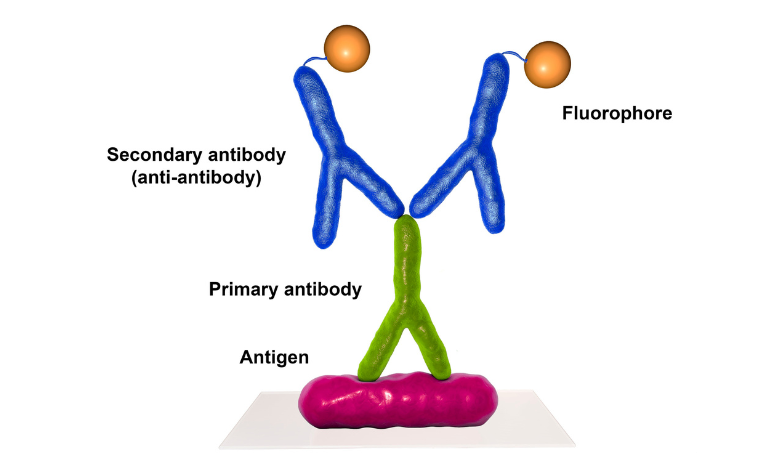The 1955 blanket lined type-3 Jacket: A Timeless Icon of American Denim

The 1955 blanket-lined Levi’s Type 3 jacket is more than just a piece of clothing—it’s a cultural artifact, a symbol of rugged Americana, and a collector’s dream. Known for its durable selvedge denim, cozy wool-blend lining, and iconic “Big E” red tab, this jacket encapsulates a pivotal moment in fashion history. Introduced as part of Levi’s 557 series, the blanket-lined Type 3 combined practicality with timeless style, making it a favorite among workers, rebels, and fashion enthusiasts alike. In this comprehensive exploration, we’ll delve into the jacket’s origins, design features, cultural impact, and enduring appeal, offering a detailed guide for collectors, denim aficionados, and anyone curious about this legendary garment. From its roots in the 1950s to its modern-day resurgence, the 1955 blanket-lined Type 3 remains a testament to Levi’s legacy and the enduring allure of vintage denim.
The Historical Context of the 1955 Blanket-Lined Type 3
Levi’s Legacy in American Workwear
Levi Strauss & Co., founded in the 1850s, built its reputation on creating durable clothing for workers during the California Gold Rush. By the early 20th century, Levi’s had become synonymous with denim, producing jeans and jackets that were both functional and iconic. The Type 3 jacket, introduced in the early 1950s, marked a significant evolution from its predecessors, the Type 1 and Type 2 jackets. While the Type 1 (506XX) and Type 2 (507XX) were designed for laborers, the Type 3, also known as the Trucker Jacket, was crafted with a broader audience in mind, blending utility with a more refined silhouette. The 1955 blanket-lined version, part of the 557 series, was specifically engineered for colder environments, offering warmth without sacrificing style.
The 1950s: A Decade of Change
The 1950s were a transformative period in American history. Post-World War II prosperity fueled economic growth, suburbanization, and a burgeoning youth culture. Denim, once strictly workwear, began to symbolize rebellion and individuality, thanks to cultural icons like James Dean and Marlon Brando. The 1955 blanket-lined Type 3 emerged in this context, bridging the gap between utilitarian roots and emerging fashion trends. Its wool-blend lining made it ideal for workers in colder climates, while its rugged aesthetic resonated with a generation seeking authenticity and self-expression. The jacket’s release coincided with the rise of rock ‘n’ roll, hot rods, and the Beat Generation, cementing its place in the cultural zeitgeist.
The 557 Series and the Big E Era
The 1955 blanket-lined Type 3 was part of Levi’s 557 series, a line that introduced the blanket lining to the Type 3 design. The “Big E” red tab, featuring “LEVI’S” in all capital letters, was a hallmark of jackets produced before 1971, making the 1955 model highly collectible. The Big E signified authenticity and craftsmanship, as these jackets were made with superior materials and techniques before mass production became the norm. The 557 series also marked a shift toward a slightly longer and fuller fit compared to earlier models, reflecting changing fashion preferences. By 1955, Levi’s was refining its designs to appeal to both workers and style-conscious consumers, setting the stage for the Type 3’s enduring popularity.
Design Features of the 1955 Blanket-Lined Type 3
Heavyweight Selvedge Denim
The 1955 blanket-lined Type 3 is crafted from heavyweight selvedge denim, typically sourced from mills like Troy Mills. Selvedge denim, woven on traditional shuttle looms, is known for its durability and clean, self-finished edges. The denim’s rich indigo wash fades beautifully over time, developing a unique patina that reflects the wearer’s lifestyle. This fading process, characterized by whiskering at stress points and a softened texture, is a hallmark of vintage denim and a key reason collectors prize the 1955 Type 3. The fabric’s heft, often around 12–14 ounces, provides structure and longevity, making the jacket suitable for rugged use while maintaining a stylish appearance.
Wool-Blend Blanket Lining
The defining feature of the 1955 Type 3 is its blanket lining, a wool-blend material typically featuring bold, striped patterns in red, brown, or black. This lining adds significant warmth, making the jacket ideal for fall and winter wear. Unlike modern synthetic linings, the wool-blend blanket is breathable yet insulating, offering comfort in chilly conditions. The lining’s texture and visual appeal also contribute to the jacket’s aesthetic, with the stripes peeking out at the cuffs and hem, adding a touch of character. The combination of denim and wool creates a tactile experience that feels both rugged and cozy, a balance that has made the jacket a favorite for layering.
Iconic Big E Red Tab
The Big E red tab, sewn onto the left chest pocket, is a defining characteristic of pre-1971 Levi’s jackets. The tab, with “LEVI’S” in all capital letters, was introduced in 1936 to combat copycats and became a symbol of authenticity. On the 1955 blanket-lined Type 3, the double-sided red tab is a collector’s marker, distinguishing it from later models with a lowercase “e.” The presence of the Big E significantly increases the jacket’s value, as it indicates production during an era of superior craftsmanship. Collectors often scrutinize the tab’s stitching and fabric to verify authenticity, as reproductions can mimic this feature.
Pleated Front and Button Details
The 1955 Type 3 features a distinctive pleated front, with two chest pockets adorned with flaps and pleats. This design gives the jacket its signature boxy, rugged look, ideal for layering over flannel shirts or sweaters. The metal buttons, stamped with “Levi Strauss & Co.,” add to the jacket’s vintage charm. Some 1955 models include factory stamps, such as “525” or “555,” indicating production at Levi’s Valencia Street Factory in San Francisco. These details, combined with single-stitch seams and cotton thread, reflect the meticulous craftsmanship of the era. The buttons’ durability and design make them a focal point for collectors assessing authenticity.
Fit and Measurements
The 1955 blanket-lined Type 3 has a shorter, boxier fit compared to modern jackets, reflecting mid-20th-century workwear aesthetics. Typical measurements include a chest width of 19–23 inches, a length of 21–25 inches, and sleeve lengths around 24 inches, depending on size. This fit allows for comfortable layering, making the jacket versatile for various seasons. The boxy silhouette, combined with the structured denim, molds to the wearer’s body over time, creating a personalized fit. This adaptability has made the jacket a favorite among those who value clothing that evolves with wear.
Cultural Significance of the 1955 Blanket-Lined Type 3
From Workwear to Rebellion
In the 1950s, the blanket-lined Type 3 transcended its workwear origins to become a symbol of rebellion and individuality. Worn by cowboys, factory workers, and ranch hands, it was equally embraced by cultural icons who redefined American style. James Dean’s portrayal of a brooding rebel in Rebel Without a Cause (1955) popularized denim as a symbol of youthful defiance, and the Type 3’s rugged aesthetic fit perfectly into this narrative. The blanket-lined version, with its added warmth, appealed to those living in colder regions, further broadening its appeal. Its appearance in media, from films to television, solidified its status as a cultural touchstone.
The Jacket in Modern Media
The 1955 blanket-lined Type 3 has experienced a resurgence in recent years, thanks to its appearances in popular media. In the TV show The Bear, character Carmy Berzatto trades a 1955 Type 3 for meat, highlighting its status as a “grail” item for denim collectors. This moment sparked renewed interest in the jacket, with fans and collectors scouring vintage markets for authentic pieces. The jacket’s timeless design and historical significance make it a natural fit for storytelling, as it evokes nostalgia and authenticity. Its presence in modern media underscores its ability to bridge generations, from 1950s rebels to contemporary fashion enthusiasts.
A Collector’s Dream
The 1955 blanket-lined Type 3 is a highly sought-after item among vintage denim collectors. Its rarity, due to its age and limited production, drives its value, with well-preserved examples fetching $500–$2,000 on platforms like eBay and Etsy. The Big E red tab, selvedge denim, and blanket lining are key factors in its collectibility, as these features are difficult to replicate in modern reproductions. Collectors also value the jacket’s natural wear patterns, such as faded sleeves and distressed collars, which tell a story of its previous owner’s life. The 1955 Type 3’s scarcity and cultural cachet make it a prized addition to any denim collection.
Identifying an Authentic 1955 Blanket-Lined Type 3
Key Authentication Markers
Spotting a genuine 1955 blanket-lined Type 3 requires attention to detail, as reproductions from Levi’s Vintage Clothing (LVC) and other brands can closely mimic the original. Here are the key markers to look for:
-
Big E Red Tab: Ensure the red tab has “LEVI’S” in all capital letters. Post-1971 jackets feature a lowercase “e,” so this is a critical indicator of age.
-
Neck Label and Factory Stamps: Check for an intact neck label with a factory stamp, such as “525” or “555,” indicating production at Levi’s Valencia Street Factory. Care labels, introduced in 1971, are a sign of a reproduction.
-
Button Details: Authentic 1955 jackets have metal buttons stamped with “Levi Strauss & Co.” Look for one- or two-digit stamps on the button backs, as three-digit stamps (e.g., 555) are more common in later models or LVC reproductions.
-
Denim Texture: Vintage selvedge denim feels heavier and has a distinct texture compared to modern fabrics. Inspect for imperfections associated with older looms, such as slubs or irregularities.
-
Wear Patterns: Authentic jackets show natural wear, such as faded elbows or a thrashed collar. Excessive distressing or uniform fading may indicate a reproduction.
Common Pitfalls and Reproductions
Levi’s Vintage Clothing (LVC) produces high-quality reproductions of the 1955 Type 3, often using selvedge denim and blanket linings. While these are excellent for those seeking the vintage aesthetic without the high cost, they lack the authenticity of an original. Reproductions may include care labels, smoother denim, or modern stitching techniques. To avoid fakes, purchase from reputable sellers on platforms like eBay, Etsy, or Grailed, and request detailed photos of the red tab, buttons, and lining. Consulting resources like Heddels’ guide to dating Levi’s jackets can also help verify authenticity.
Styling the 1955 Blanket-Lined Type 3
Versatile Fashion Options
The 1955 blanket-lined Type 3 is remarkably versatile, lending itself to a variety of styles. Here are some ways to incorporate it into modern wardrobes:
-
Casual Look: Pair the jacket with a white T-shirt, slim-fit jeans, and sneakers for a timeless, laid-back vibe. This outfit is perfect for weekend outings or casual gatherings.
-
Layered Look: Wear it over a flannel shirt or hoodie for added warmth in cooler weather. The blanket lining enhances its layering potential, making it ideal for fall and winter.
-
Vintage Workwear: Combine with high-waisted selvedge jeans and work boots for a retro, workwear-inspired outfit. This look channels the jacket’s 1950s roots and appeals to heritage fashion enthusiasts.
-
Modern Twist: For a high-low fashion statement, pair the jacket with tailored trousers and loafers. Celebrities like Jeremy Allen White have popularized this approach, blending vintage denim with contemporary pieces.
The jacket’s boxy fit and rich fade make it a standout piece, whether styled for a rugged or refined aesthetic. Its versatility ensures it remains a wardrobe staple across seasons and trends.
Caring for Your Vintage Jacket
Owning a 1955 blanket-lined Type 3 requires careful maintenance to preserve its condition and value. Here are some tips for proper care:
-
Washing: Avoid machine washing, as it can damage the denim and lining. Hand wash in cold water with a mild detergent, or opt for dry cleaning to maintain the fabric’s integrity.
-
Storage: Store the jacket in a cool, dry place on a padded hanger to maintain its shape. Avoid folding it tightly, as this can crease the denim.
-
Repairs: Small tears or loose stitching should be repaired by a tailor experienced with vintage denim. Some collectors embrace minor wear as part of the jacket’s character.
-
Avoid Over-Cleaning: The beauty of vintage denim lies in its patina, so avoid frequent washing. Spot cleaning is often sufficient to keep the jacket looking fresh.
Proper care ensures the jacket remains wearable and valuable, allowing future generations to appreciate its history.
The Enduring Appeal of the 1955 Blanket-Lined Type 3
A Bridge Between Past and Present
The 1955 blanket-lined Type 3 bridges the gap between its workwear origins and modern fashion. Its ability to resonate with diverse audiences—from vintage collectors to contemporary style enthusiasts—speaks to its timeless design. Brands like Levi’s Vintage Clothing, RE/DONE, and Japanese labels such as Full Count and Iron Heart have released reproductions that capture the 1955 aesthetic, introducing it to new generations. These reproductions, while high-quality, lack the historical weight and unique wear patterns of an original, making authentic 1955 jackets all the more coveted.
Where to Find an Authentic 1955 Type 3
Finding a genuine 1955 blanket-lined Type 3 is a challenge, but several avenues offer opportunities:
-
Vintage Stores: Shops like Black Shag Vintage and Barn Owl Vintage Goods often carry Big E jackets. Check measurements, as sizing varies.
-
Online Marketplaces: eBay, Etsy, and Grailed are go-to platforms for rare finds. Verify authenticity with detailed photos and seller ratings.
-
Thrift Stores and Flea Markets: These are hit-or-miss but can yield treasures. Persistence is key, as authentic jackets are rare.
-
Collector Networks: Join denim enthusiast communities on Reddit or forums like Heddels to connect with sellers and learn about upcoming sales.
Expect to pay a premium for a well-preserved jacket, with prices ranging from $500 to $2,000 depending on condition and provenance. The investment is worthwhile for those who value history and craftsmanship.
The Jacket’s Legacy
The 1955 blanket-lined Type 3 is more than a garment—it’s a piece of Americana. Its journey from workwear to cultural icon reflects the evolution of denim as a symbol of durability, rebellion, and style. Whether worn by a 1950s cowboy, a 1960s rebel, or a modern fashion enthusiast, the jacket carries a legacy of authenticity and resilience. Its appearances in media, from classic films to contemporary TV shows, underscore its enduring relevance. For collectors, the hunt for a 1955 Type 3 is a quest for a tangible connection to the past, a reminder of a time when clothing was built to last and tell a story.
Conclusion
The 1955 blanket-lined Levi’s Type 3 jacket stands as a testament to the enduring power of well-crafted design. Its heavyweight selvedge denim, cozy wool-blend lining, and iconic Big E red tab make it a standout piece in the world of vintage fashion. From its origins in the 1950s, when it served workers and rebels alike, to its modern-day status as a collector’s item and style staple, the jacket has transcended time and trends. Its versatility allows it to be styled in countless ways, from casual to high-fashion, while its rarity and craftsmanship drive its value among collectors. For those fortunate enough to own one, the 1955 Type 3 is a wearable piece of history, a garment that tells a story with every fade and fray. Whether you’re a denim aficionado or simply appreciate timeless style, the 1955 blanket-lined Type 3 is a reminder that great design never goes out of fashion. Its legacy continues to inspire, proving that some classics are truly built to last.


